All cars have dashboard warning lights, but do you know what those lights are trying to tell you? We explain them here.
MODERN CARS are filled to bursting with technology. There are sensors to monitor engine temperature, brakes, airbags, oil, batteries and more. And while there are a series of common symbols, which we’ve explained here, some will be common to your vehicle and so it’s vital you look through your car’s owner manual.
Bear in mind that when you turn your car on, all of the warning lights will usually momentarily light up as the car cycles its systems. If one of the dashboard warning lights stays illuminated once the others have extinguished, then it’s either alerting you to an issue, or it could just be a faulty sensor.
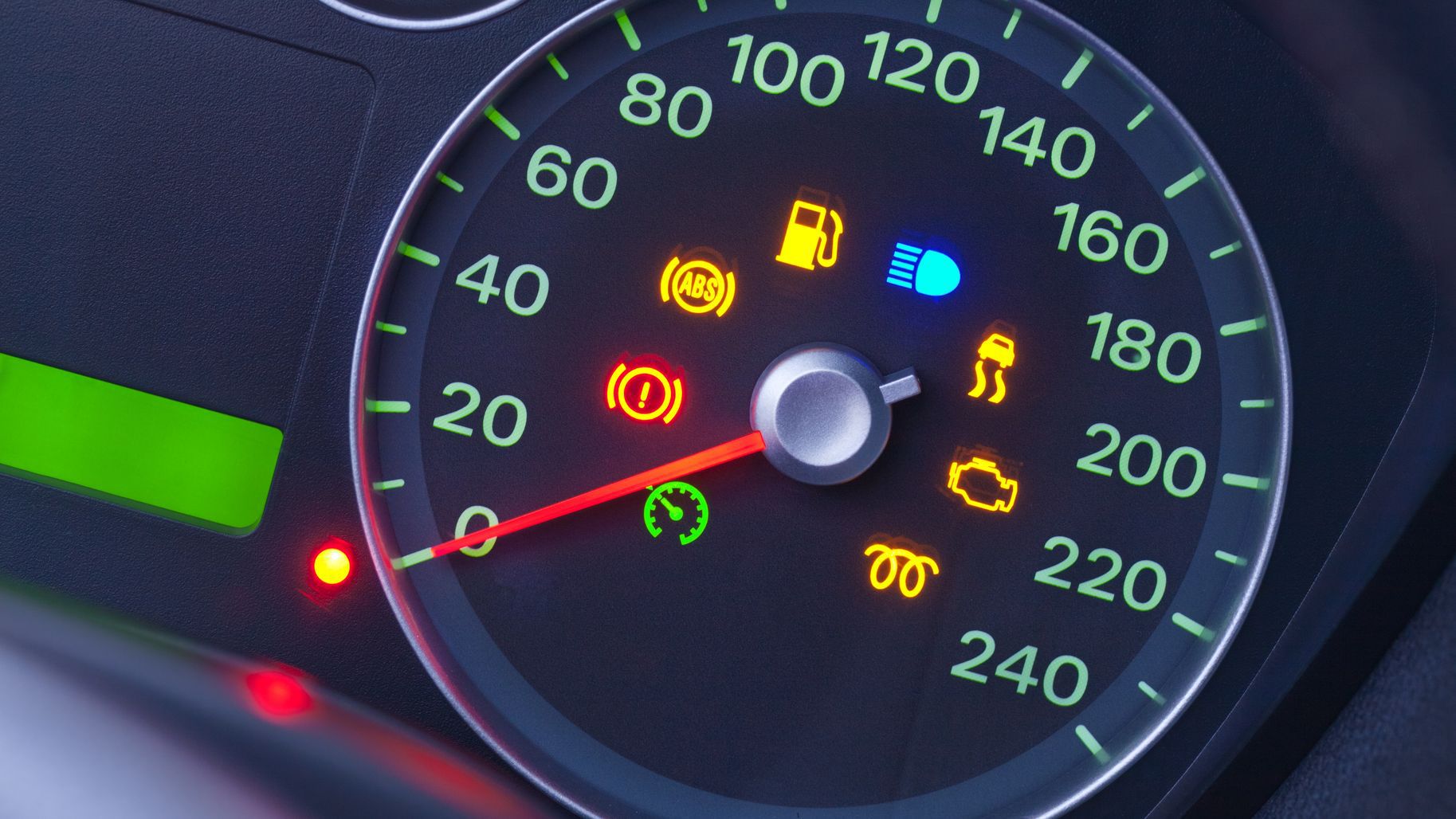
Engine Warning Light (or Check Engine Light, CEL)
If the engine warning light illuminates, then it’s likely to be accompanied by a mechanical symptom. Either a sudden loss of power (which suggests the car has gone into limp mode to protect itself), or a stutter, or anything that suggests the engine is not behaving as normal. If the warning light stays on and there is a definite mechanical symptom then pull over the side of the road, as long as it’s safe, and then call for roadside assistance. Even if you don’t have roadside assistance cover you can arrange for it over the telephone. You don’t want to risk driving the car to your local mechanic as it could cause further and irreparable damage to the engine.
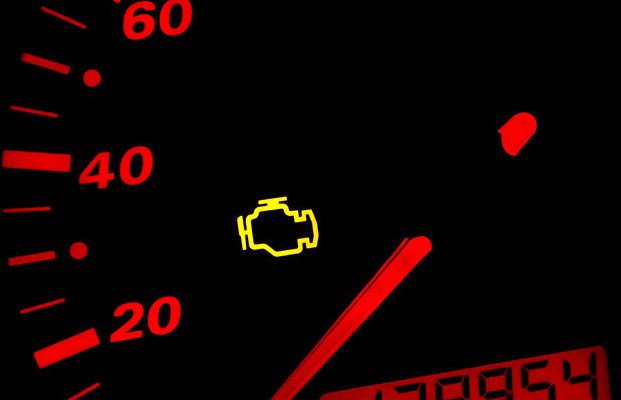
Brake warning light
Quite often you’ll see the brake warning light (shown in main image above) illuminate if the handbrake hasn’t been fully released. The car will move off but the light will stay on and the car will feel retarded, quite often the light will be accompanied by a chime. If you’ve released the handbrake and the light is still illuminated, then you’ll need to have your car checked out by a mechanic immediately. It could mean you’re low on brake fluid, or a sensor has failed. Either way, it’ll pay to have this issue checked out.
Coolant/antifreeze warning light
Your car’s temperature gauge is one of those things you probably never even notice, and when all is going well and your car’s coolant levels are bang-on the temperature gauge will usually rise to half-way and then stay there. However, if the gauge starts to show the engine’s temperature is rising, or you see a warning light on the dashboard before you notice the temperature gauge then it means you’re either low on coolant/antifreeze or it could mean your engine’s overheating. A quick look at the temperature gauge will tell you which one.
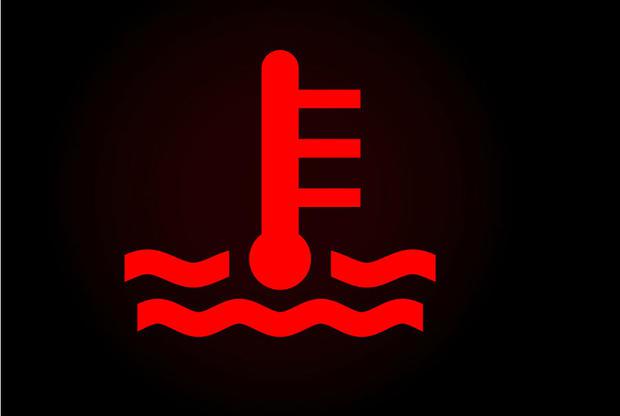
Oil warning light
If the oil warning light flashes up onto your dashboard, then it could be one of three things. And that is that the oil temperature is too high, or that the oil level or pressure is too low. While the latter two are the worst case scenarios you don’t want the temperature to get too high either. Oil keeps your car’s engine lubricated and, so, if you see the oil warning light illuminate then stop your car and contact your local mechanic.
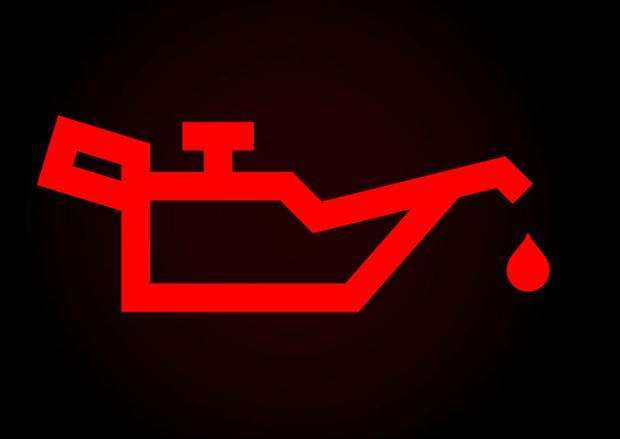
Battery charge warning light
Your car’s battery light should illuminate for a second or two when the car is started, but if it hasn’t gone out once the car is idling then there’s likely to be an issue. That issue could be with your car’s alternator, which keeps the battery charged while you’re driving around, or it could be a bad connection, or it might fade in and out when starting the car indicating the battery is dying. If your car’s battery warning light does illuminate and your car won’t start then you should contact roadside assistance or, if you’re handy, buy a replacement battery and swap it over yourself.
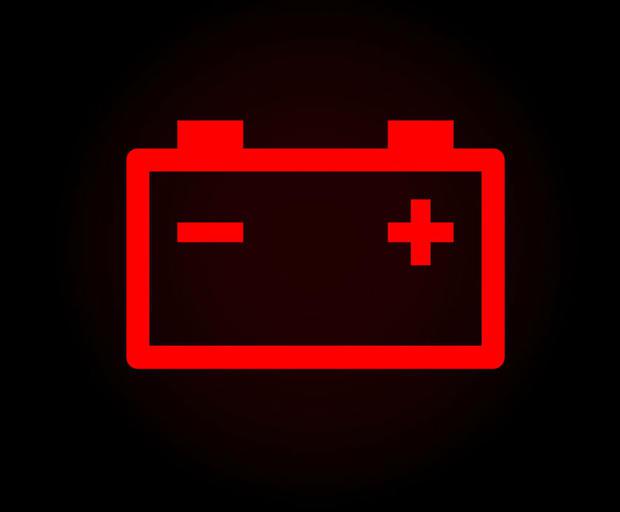
Tyre pressure warning light
Many modern cars have a tyre pressure monitoring system that will alert you if one of your tyres drops below its set pressure. This needs to be reset every time you fill your car’s tyres with air. If this symbol illuminates, then you’ll need to check your tyres – always carry a tyre pressure gauge in your car.
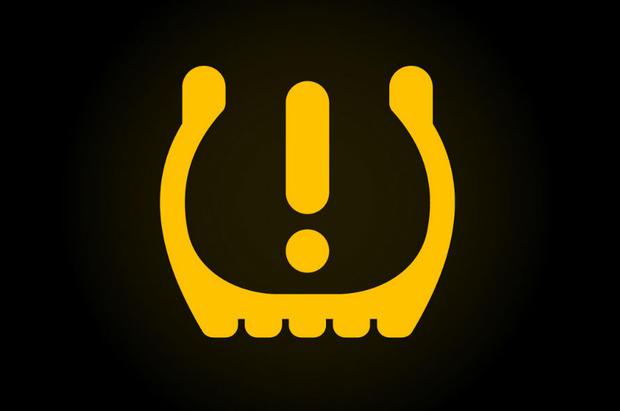
Traction control / stability control warning light
If you see this symbol permanently illuminated on your dash (see below), then it means you’ve deactivated your car’s traction control system. Practical Motoring doesn’t recommend deactivating the traction control in general driving. There’ll be a button somewhere on your dashboard that turns this safety system back on.
It could also mean your wheel alignment is so far out of true that the electronics can’t cope and throw up an error.
If you see this occasionally around corners when driving fast (or badly) it just means that traction control or stability control is working. If you see if illuminate around corners taken normally it may also mean low tyre pressures…as the car is sliding more on low pressure tyres and activating stability control.
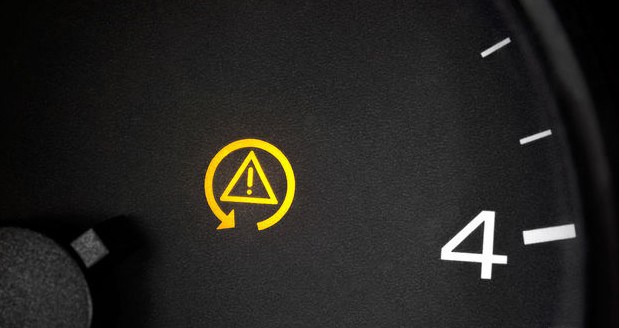
Seatbelt warning light
This one’s fairly self-explanatory. If you see the seatbelt warning light flash up then it means that someone in the car isn’t wearing their seatbelt. Most car seats have inbuilt pressure sensors to tell when someone’s sitting in the seat but that a seatbelt isn’t being used, there are also sensors in the seatbelt receiver to tell when it’s engaged.
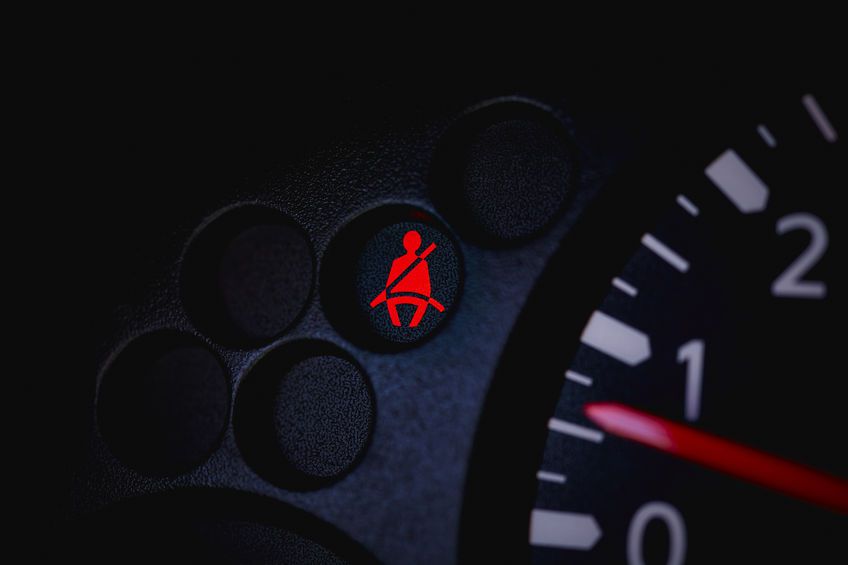
Door/boot warning light
If you see what appears to be a car with its doors open or the boot up, then it’ll mean that either one of the doors or the car’s boot is ajar. You should pull over to the side of the road and close the door again. Sometimes the door can look to be closed and even feel like it’s caught on a catch, but the light will also illuminate if the door is only lightly closed. Modern cars tell you which door is open – older ones just tell you one of the doors isn’t closed properly.
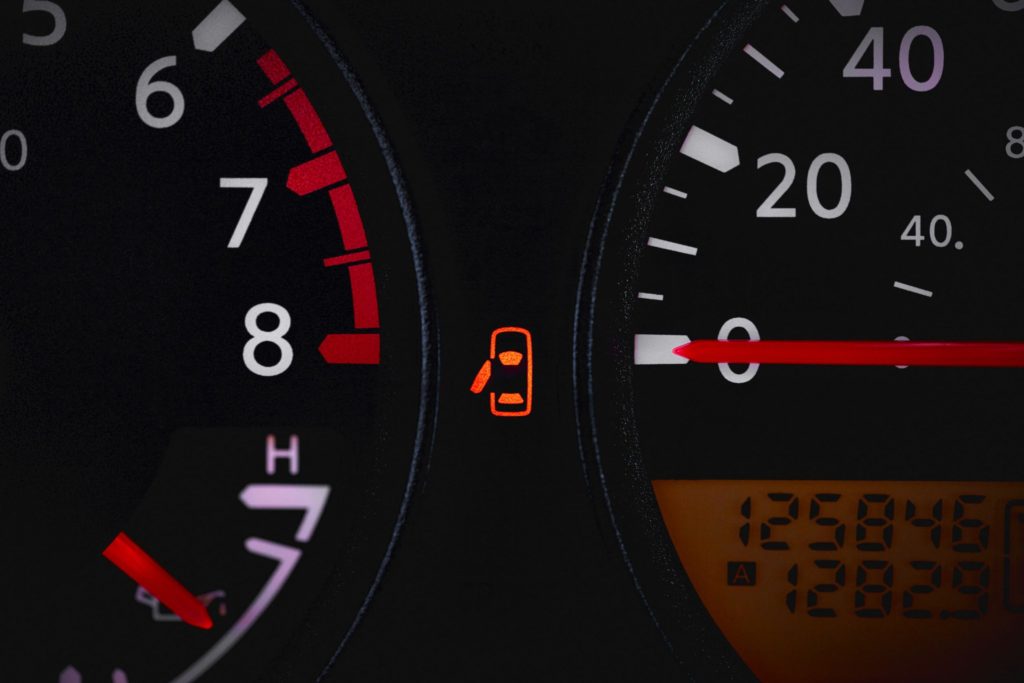
Low-fuel warning light
This one’s obvious. If you see the low-fuel warning light illuminated on your dashboard then it means you’re running low on fuel and have somewhere between 80-120km of fuel left. Many cars will also show a distance to empty readout on the dashboard.
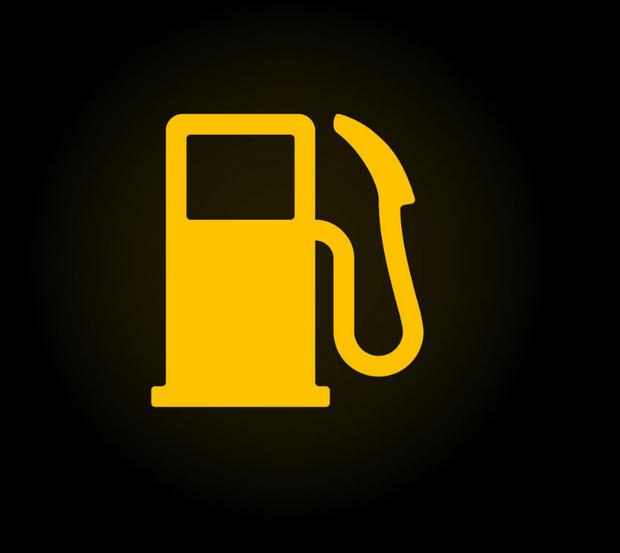
Automatic shift lock or engine start warning light
Looking like a foot on a 45-degree angle, this warning light’s telling you you need to place your foot on the brake to either move the gear shifter (for an automatic) from P for Park to D for Drive, or that you need to have your foot on the brake to start the car.
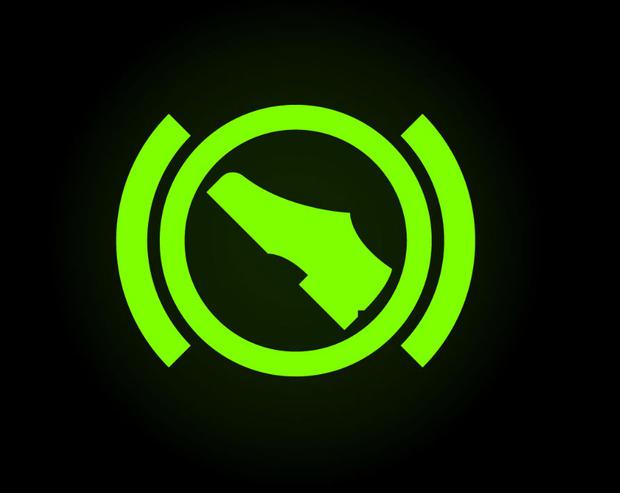
Airbag warning light
Looking like someone balancing a ball on their stomach, this warning light being illuminated suggests there’s a fault with one or more of your airbags, although like most warning lights it is normal for it to illuminate on startup. Take your car to your local mechanic for a check-up.
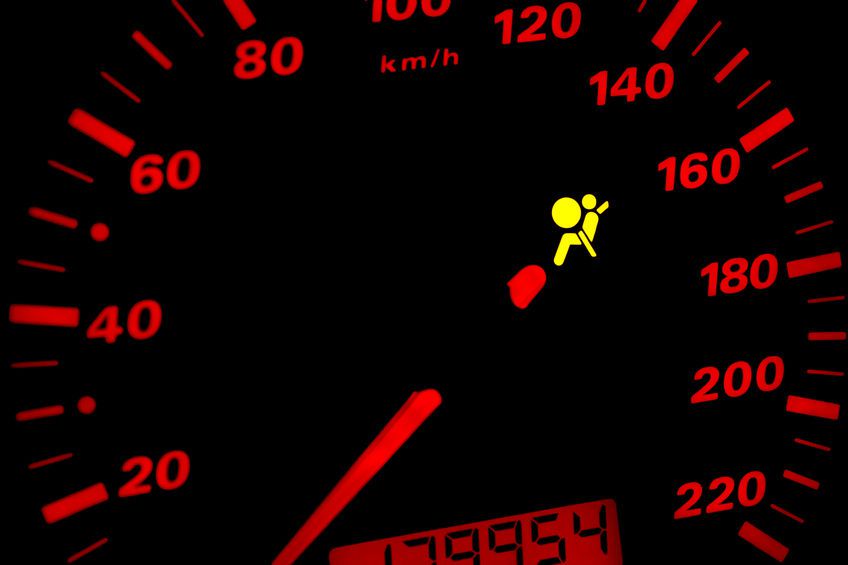
Fog light activation
It can be easy to inadvertently activate your fog lights, both front and rear (if your car has them) but, if there’s no fog then it’s illegal to drive with them switched on.
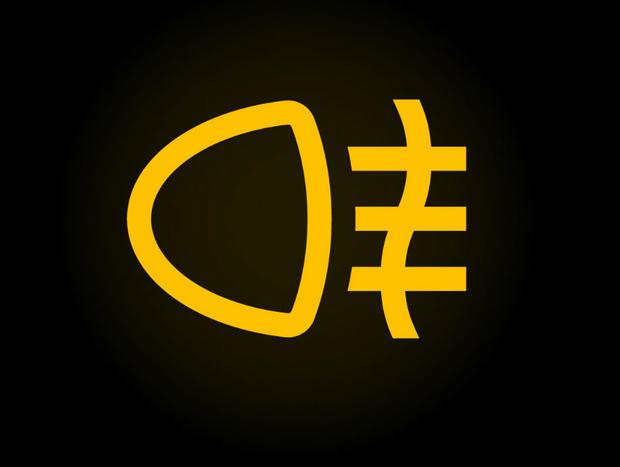
Windscreen washer fluid warning light
If you see what looks like a windscreen with a fountain flash up on your dashboard then it means you cars washer fluid is running low.
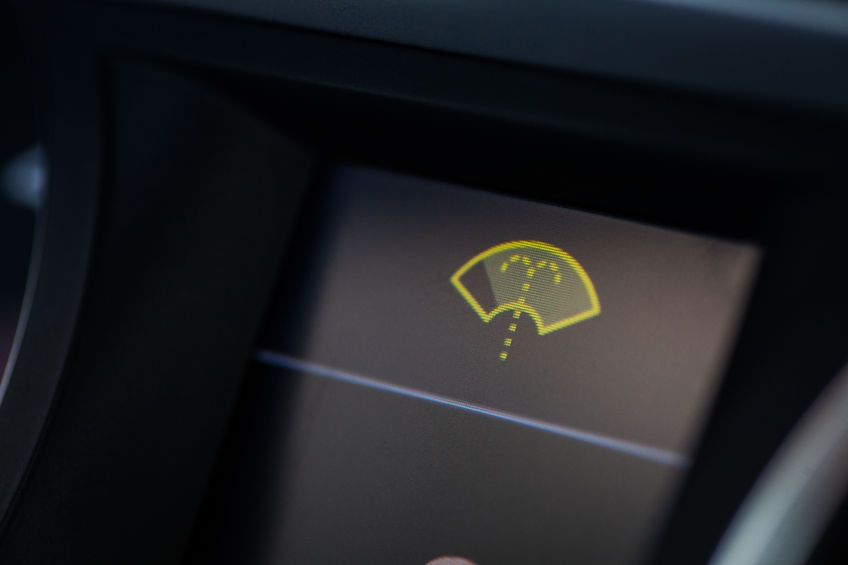
High beam warning light
This blue warning light (shown in main image above) will illuminate when your high beam headlights are activated. You need to dip them if there’s oncoming traffic to avoid dazzling the driver and causing a collision.
These are just a handful of the most common warning lights. We’ll add to the list over time.
Source: Practicalmotoring
